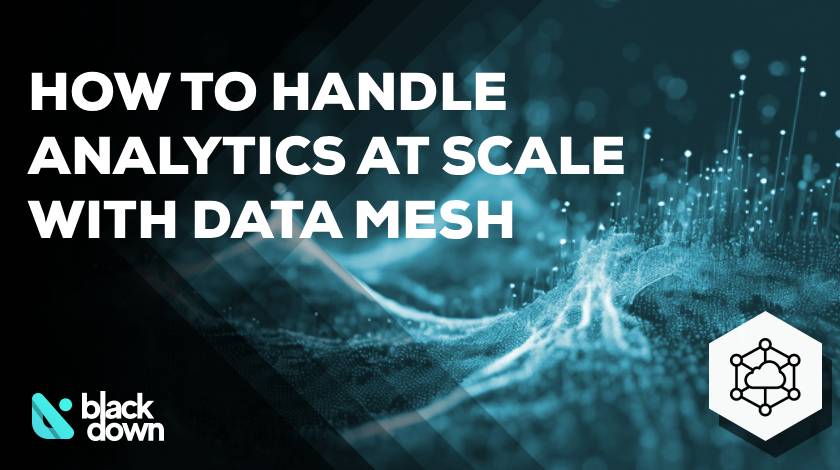Most companies are drowning in data but starving for insights. Traditional data systems funnel everything through a central team. That team becomes overwhelmed, pipelines break constantly, and the people who need the data are stuck waiting.
Data mesh offers a different path. Instead of centralizing everything, it distributes ownership to the teams who know the data best.
What Makes Data Mesh Different
Data mesh is a decentralized approach where each business domain owns its own data. Marketing manages marketing data. Finance handles financial metrics. Product owns user analytics. This concept came from Zhamak Dehghani at ThoughtWorks in 2019.
Traditional data warehouses centralize everything, creating bottlenecks. New data sources take months to integrate. Data lakes emerged to handle big data analytics and diverse sources, storing raw data cheaply but often becoming disorganized swamps. Data mesh flips this entirely. Each domain becomes a data provider, building their own pipelines and managing their own ETL processes. The goal is self serve analytics where authorized users access what they need on demand.
Four Core Principles

Domain Ownership means business domains own their data pipelines completely, accountable for quality and availability.
Data as a Product treats data like any other product with users, quality standards, and lifecycle management. Domain teams ensure their data is discoverable, well documented, and trustworthy.
Self Serve Infrastructure provides tools domains need to build data products independently. A central platform team offers cloud infrastructure and cataloging tools as a service.
Federated Governance distributes responsibility while maintaining consistency. Global standards for data format, metadata, security, and compliance are agreed upon across domains.
Why It Matters
To understand why data mesh matters, you need to revisit what is data analytics at its core. It’s about turning raw data into actionable insights that drive decisions. Data mesh makes this process faster and more effective.
Faster access to data happens when domain teams publish data products directly. Analysts no longer wait for the central team to integrate sources or build reports. This democratizes data access.
Better data quality emerges when the people producing data are the ones who understand it best. Domain teams treat their data as a product, focusing on documentation, metadata, and quality.
Cross domain insights become possible without bottlenecks. Data products from different domains can be linked when they follow common standards. This is crucial for holistic analytics like 360 degree customer views combining marketing, sales, and support data.
Scalability improves naturally. As organizations grow, new domains or data products can be added with minimal impact on others because each is somewhat independent.
Real World Examples
Intuit embraced data mesh to enable smarter product experiences. Their analysts struggled with finding and trusting data under the old centralized model. By moving to data mesh, they set up domain data teams responsible for creating data products aligned to business problems. This dramatically improved data discoverability and eliminated duplicate efforts.
JPMorgan Chase made data mesh a key part of their data modernization strategy. Each business line now owns its data lake end to end on a cloud platform. A centralized governance layer oversees standards so data across the bank remains consistent even as ownership is decentralized. The result is greater data reuse and agility.
Challenges to Consider
Implementing data mesh is a significant undertaking. Success hinges on organizational maturity and commitment. Like any digital transformation, it requires more than just technology.
Cultural change represents the biggest barrier. Data mesh demands a shift in mindset where domain teams take on responsibilities traditionally handled by a central team. You need strong executive sponsorship and investment in training.
Governance complexity is tricky to get right. Without strict alignment on standards, a mesh can devolve into chaotic silos. Maintaining consistency across independent teams requires a robust governance body and automated enforcement.
Infrastructure complexity is substantial. Implementing a self serve data platform involves setting up cloud infrastructure, data catalog, lineage tracking, and monitoring. Tools like Databricks, Snowflake, or Atlan are often used, but expect substantial effort up front.
Phased adoption is essential. Don’t try to adopt data mesh in one big bang. Identify a few domains with clear pain points to pilot the approach rather than reorganizing everything overnight.
Final Thoughts
Data mesh isn’t for every organization. It shines in large, complex enterprises where data and responsibilities naturally span many domains. If your company is small or has homogenous data needs, a traditional approach might suffice.
You can adopt some mesh principles without others. The key is focusing on solving actual business problems. If decentralizing data ownership will solve bottlenecks and drive analytics innovation, it’s worth the effort.
Big companies have shown that data mesh can lead to faster insights, more empowered teams, and tangible business gains. But success requires cultural shift and strong governance practices.
Thomas Hyde
Related posts
Popular Articles
Best Linux Distros for Developers and Programmers as of 2025
Linux might not be the preferred operating system of most regular users, but it’s definitely the go-to choice for the majority of developers and programmers. While other operating systems can also get the job done pretty well, Linux is a more specialized OS that was…
How to Install Pip on Ubuntu Linux
If you are a fan of using Python programming language, you can make your life easier by using Python Pip. It is a package management utility that allows you to install and manage Python software packages easily. Ubuntu doesn’t come with pre-installed Pip, but here…









